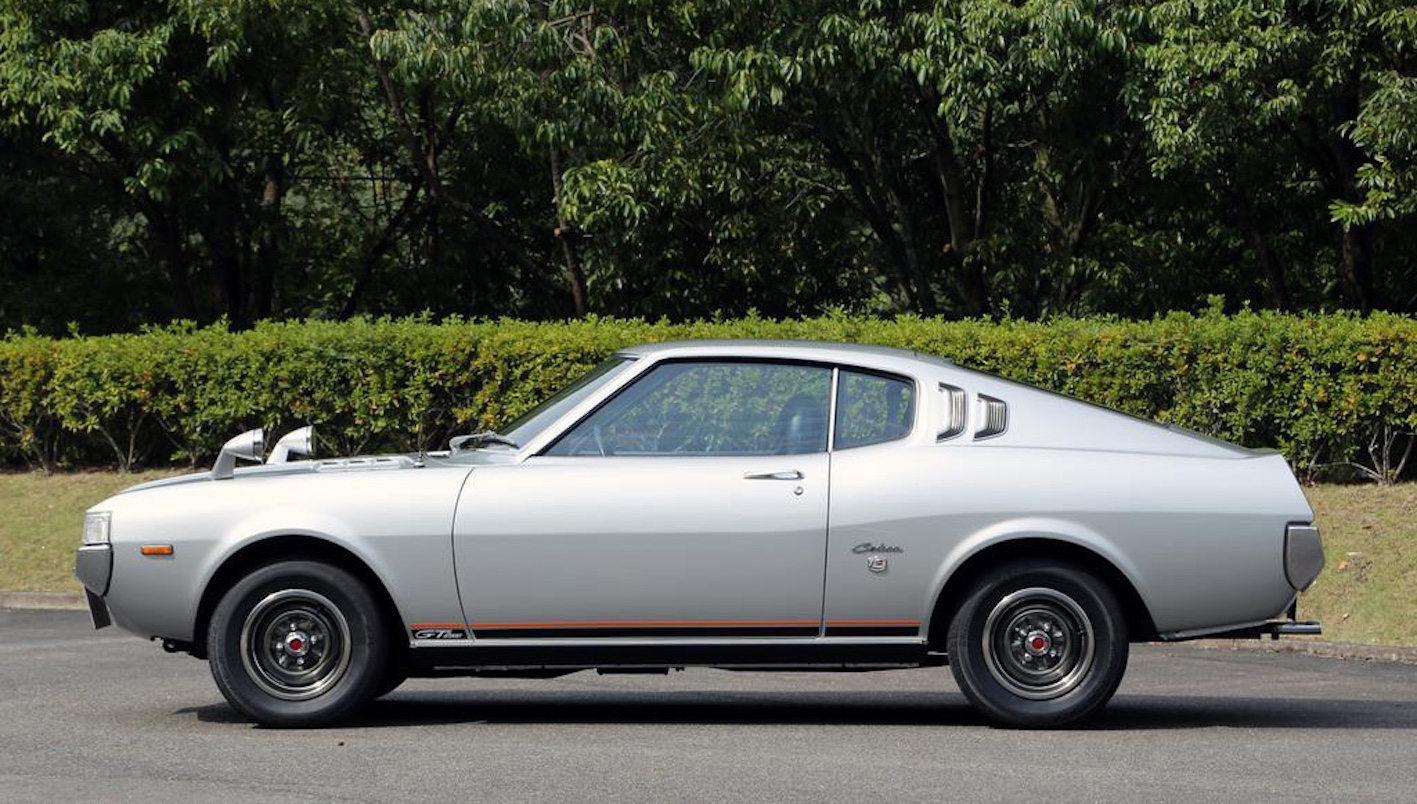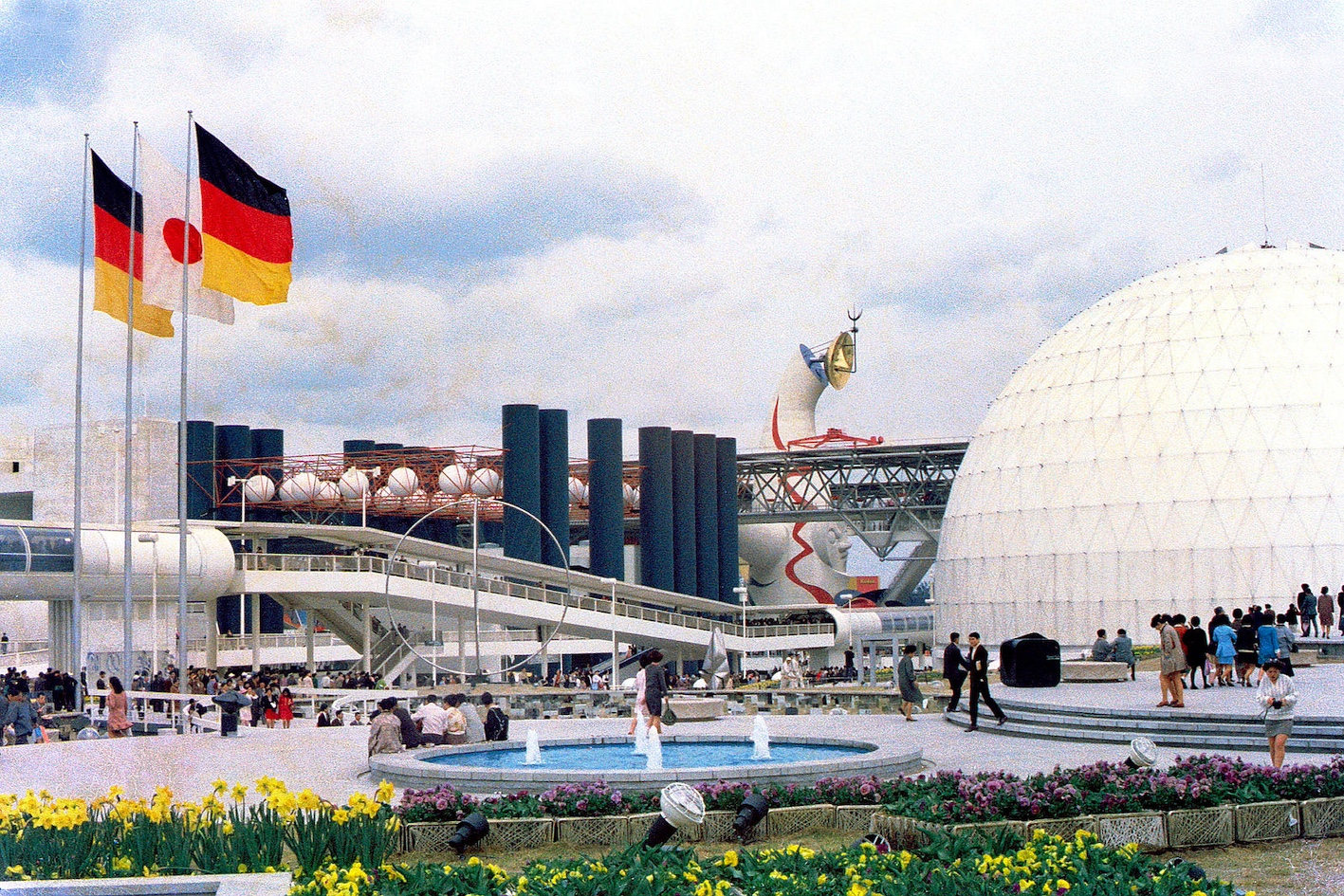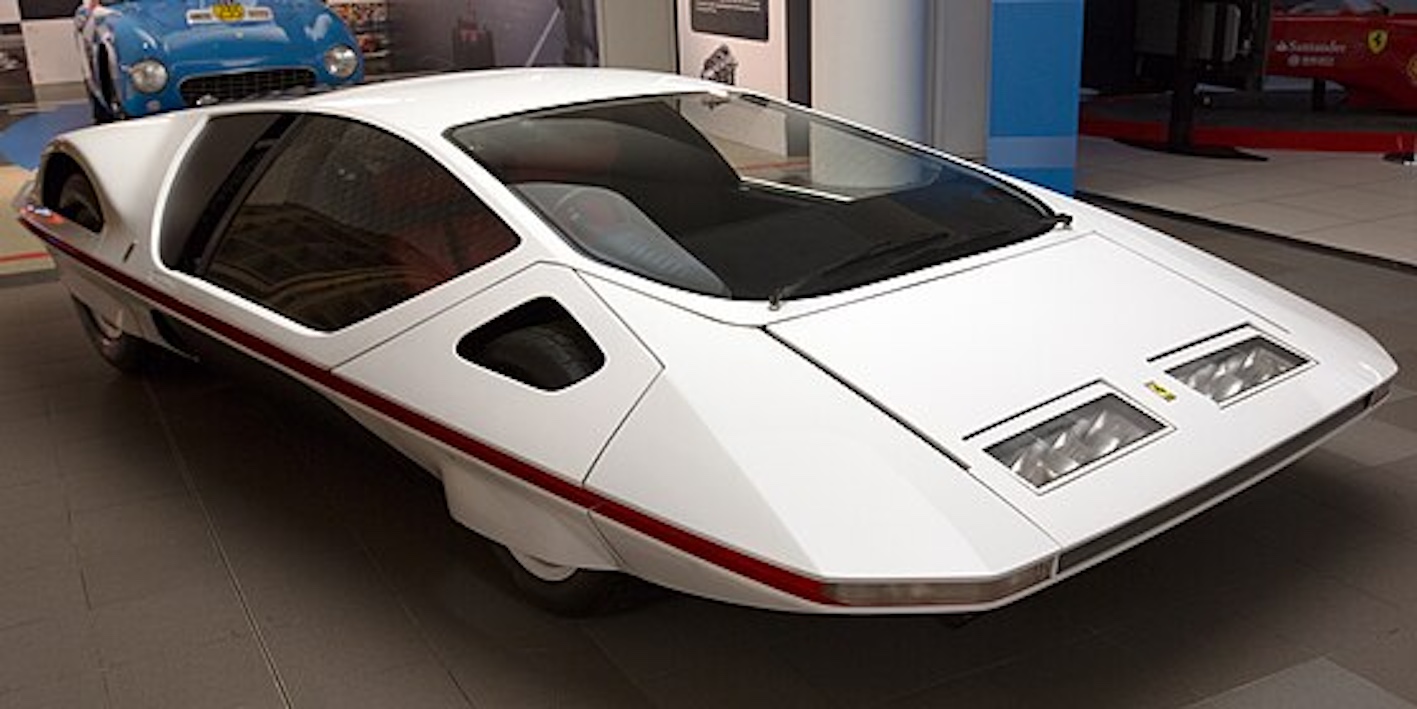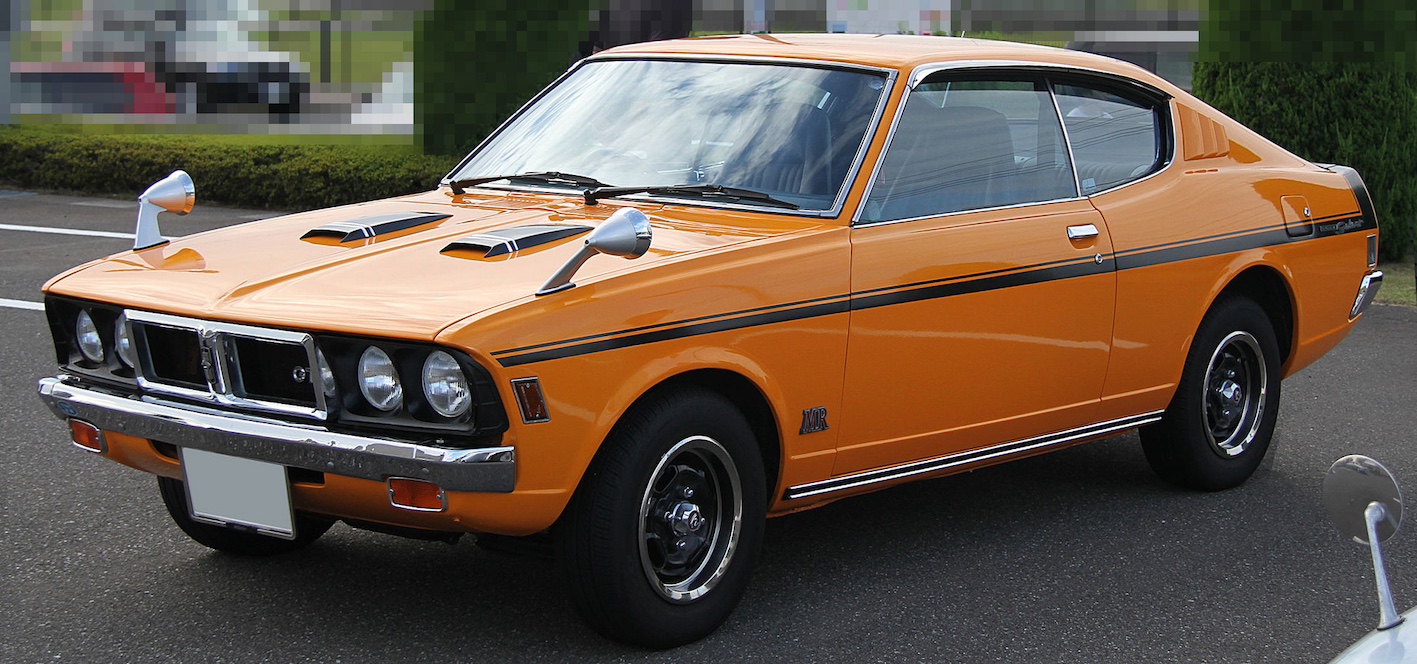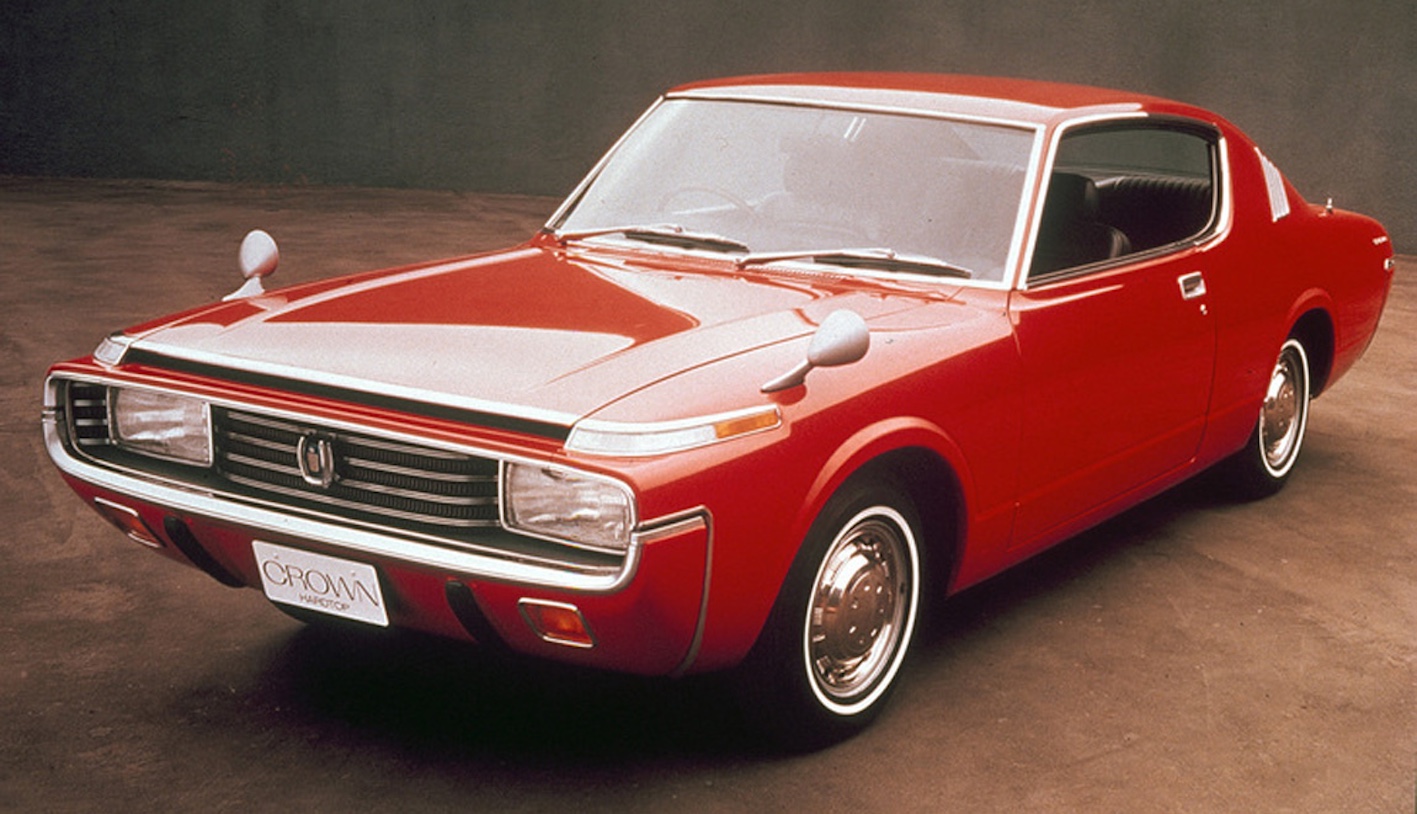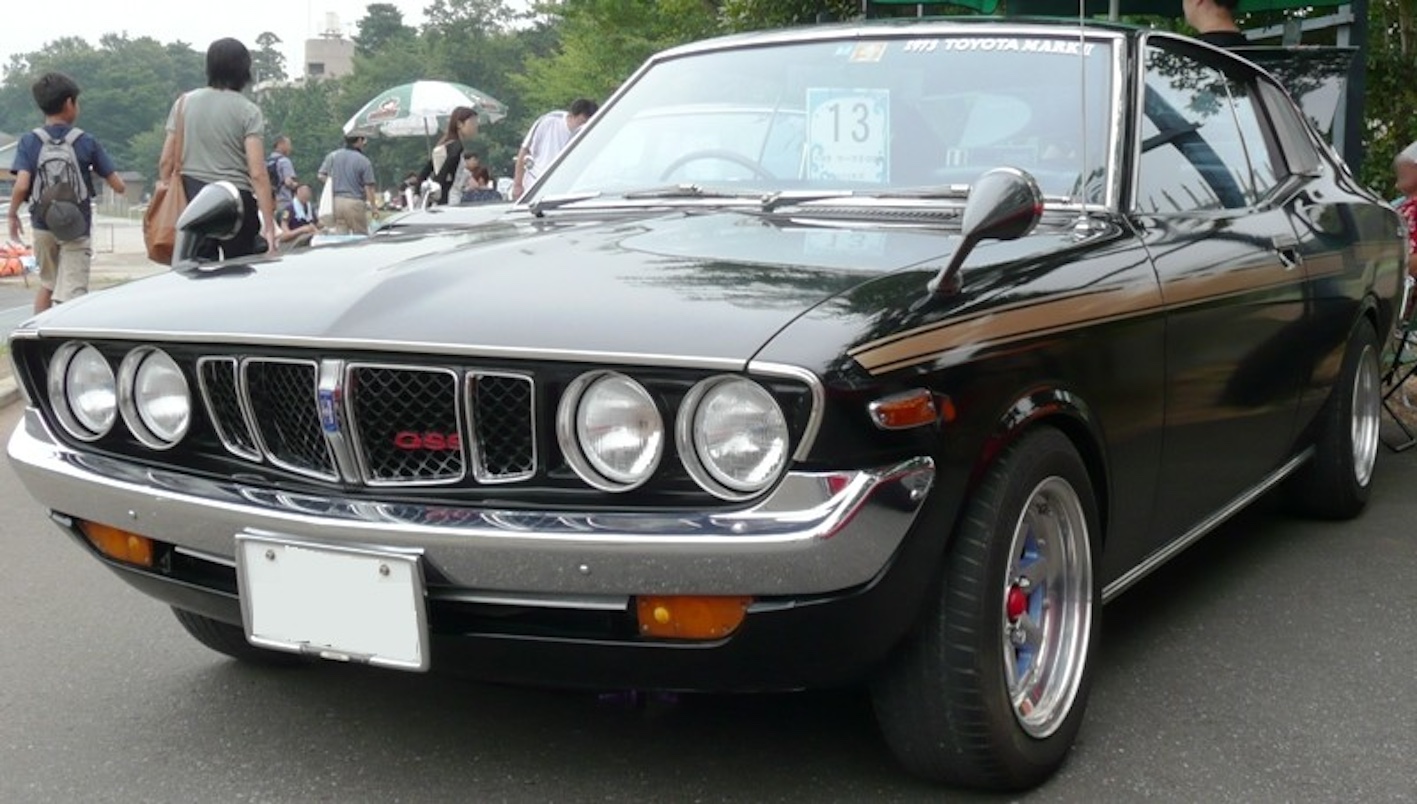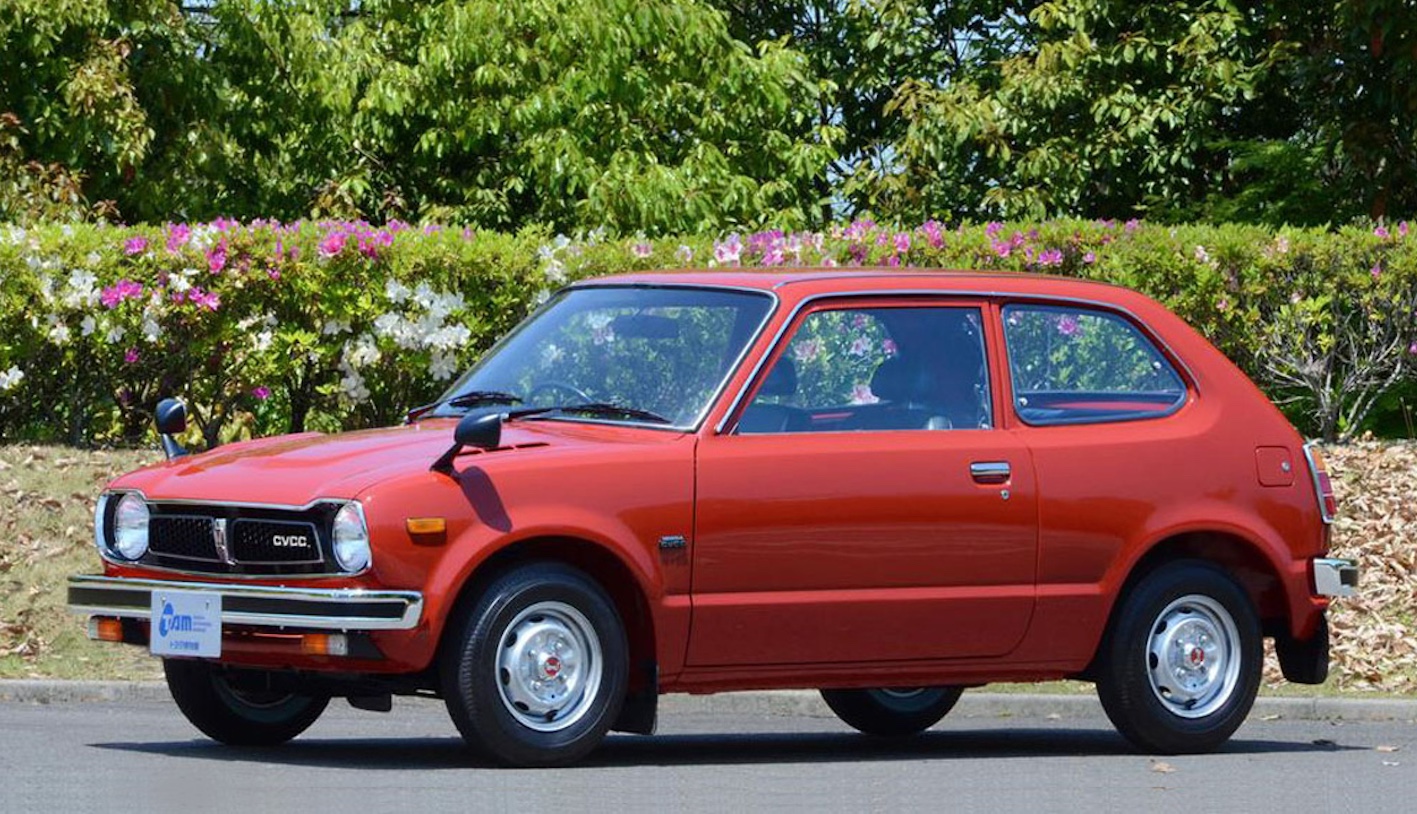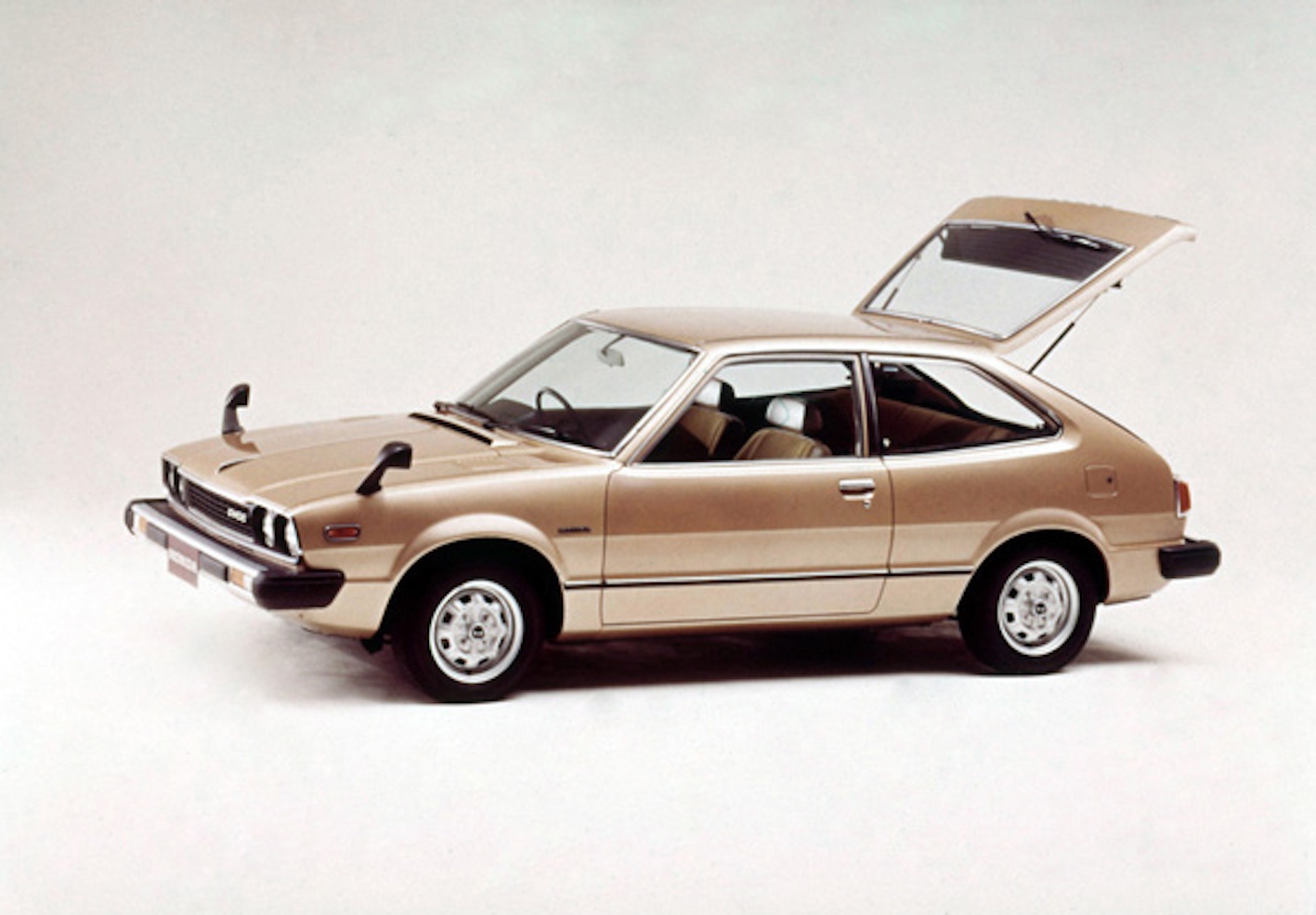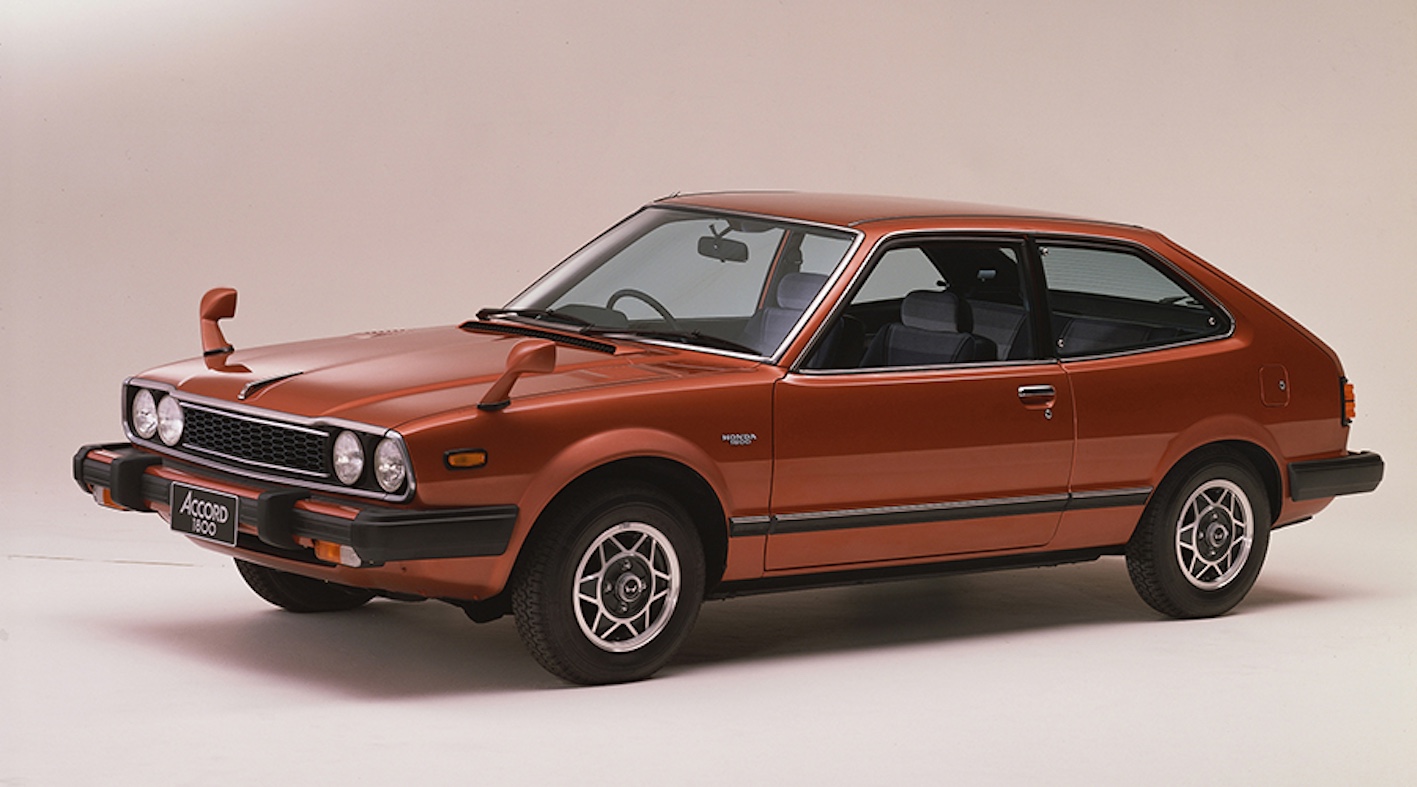60年代そして70年代という時代
前回のコラムで書いた様に60年代の日本の自動車メーカーは、珠玉の小型スポーツカーを作り出しました。日本に限らずこの時代は技術的に大きな進歩が見られた頃で、その代表的な物が米ソの宇宙開発競争でした。60年代初めに米国大統領であったJ.F.Kennedyが「この10年の内に月面に着陸する。」と掲げた宣言をNASAがApollo11で達成したのも60年代最後の年、1969年7月でした。

その60年代から次の70年代にかけて、世の中全体が上昇志向にあり、「明日は必ず今日より良くなる」 と感じさせるものが有りました。代表的な出来事としては、3Cブームと呼ばれる3つの工業製品(ColorTV, Cooler, Car)が一般家庭に急速に普及し始めた事です。日本のモータリゼーションが一気に加速したのもこの頃でした。
Expo70:大阪万博のPininfarina Moduro
そして1970年、私の故郷大阪で記念碑的な出来事がありました。Expo70:大阪万博の開催です。

その前年に月面に着陸し帰還した米国のアポロ11関連の展示は勿論大人気でしたが、私にとって一番インパクトの大きかったものは、イタリア館に展示されていた白いコンセプトカー”Pininfarina Moduro”でした。
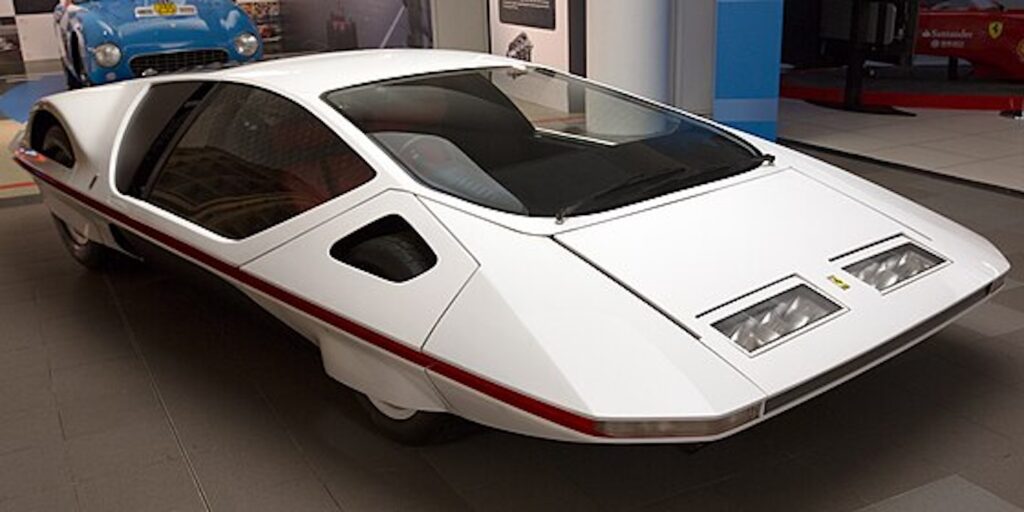
当時中学3年生であった私の家にはまだ自家用車は無く、何処へ出かけるにも鉄道を利用していたので必然的に私は、今で言う「鉄ちゃん」でした。勿論動く乗り物である自動車にも関心は有りましたが、自動車は2番目でした。そんな私の頭の中に晴天の霹靂とも言える程のインパクトを与えたのが、このModuroでした。伸びやかでスタイリッシュなアメ車、コンパクトでキュートな日本のスポーツカーは車として魅力的でしたが、Moduroは今までの車という概念を根底から覆してしまう程のインパクトがありました。 2シーターとは言え2mを超える全幅や935mmと言う全高はそれまでの車という概念を根底から覆すプロポーションと造形をしていました。つまり「物」として凄くかっこ良かったのです。
70年代の国産スポーティーカー:セリカ&カリーナ、ギャランGTO、ハコスカH/T
そして、1970年の夏と共に大阪万博も終わった後、コンセプトカーだけでは無く量産車の世界でも新しい流れが来ます。その年の12月にトヨタが、2ドアクーペのセリカと2ドアと4ドアセダンのカリーナを発売しました。その頃既に車の雑誌:”モーターファン”誌を読む様になっていた私は、セリカの魅力的なスタイルがカリーナと言う比較的平凡なセダンと同じプラットフォーム上にデザインされている事を知り、車のスタイリングと言うものに大いに関心を持つ様になって行きました。
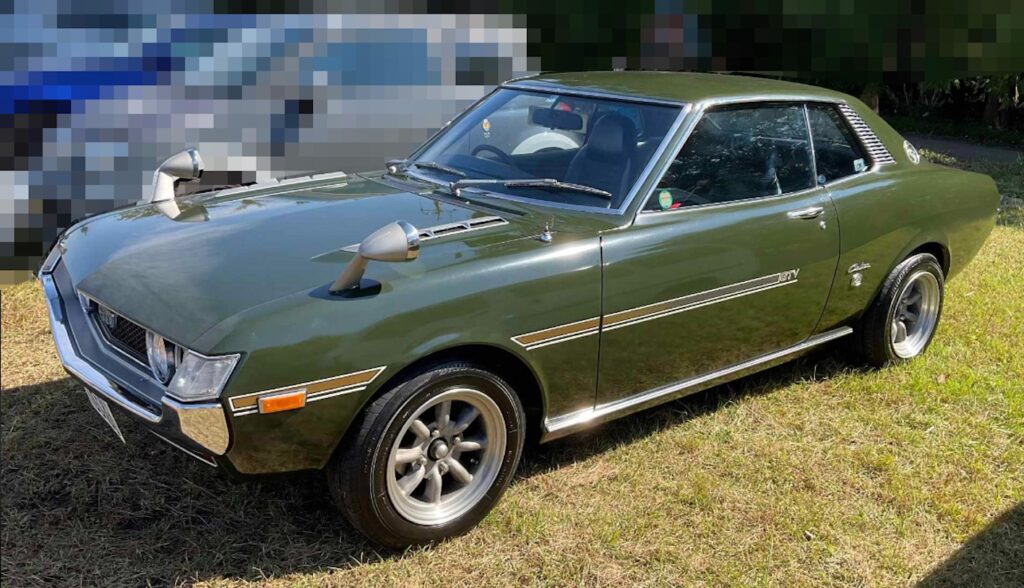
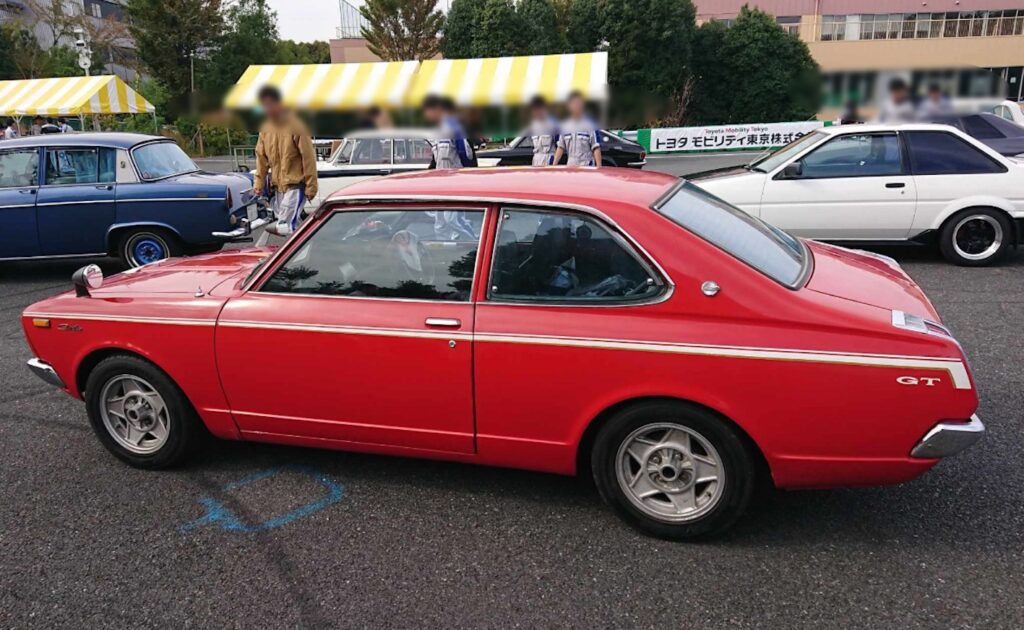
同年10月には三菱からギャランGTO, また日産からはスカイラインの2ドアハードトップ(GTR含む)も発売されています。この2車もベースとなる量販セダン車両のシャーシーを元に全長、全高等を縮小してよりスポーティーなスタイルを造り出していました。
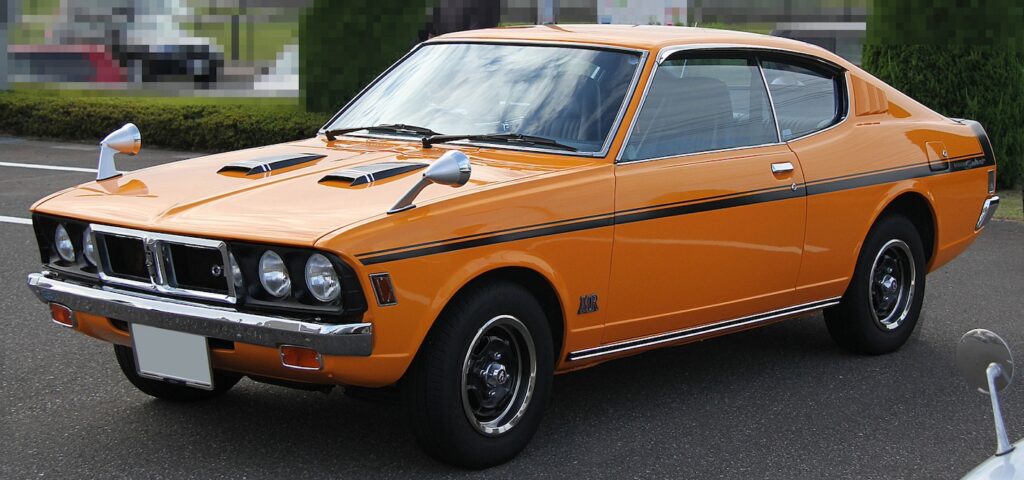

日本車独自のモダンデザインの開発
更に1971年に発売された4代目クラウンは、スピンドルシェイプと表現された一つのカプセルの様なデザインで、それまでのアンダーボディーにキャビンを乗せたという構築とは少しことなるデザイン言語が採用されます。特に2ドアハードトップは、そのスタイルテーマが強く表現されてモダンでした。ただ、クラウンという比較的保守的な購買層には広く受け入れられなかった様で、販売面ではライバル日産セドリックの後塵を拝する事になりました。私は今でもとても好きなデザインの一つなのですが、ただ新しければ良いという訳では無いところがデザインの難しさです。
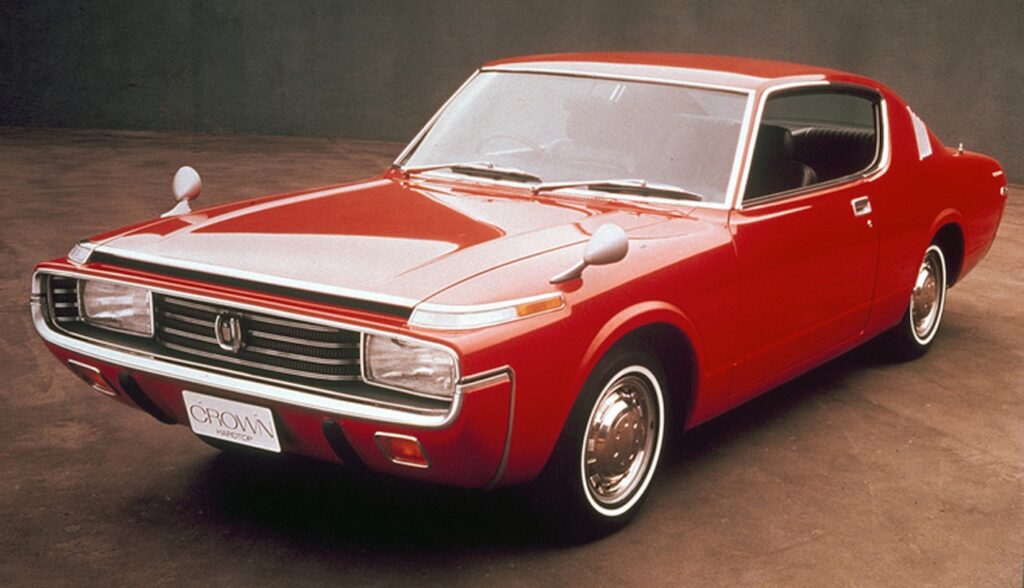
その翌年にはトヨタから3代目マークII、日産からは2代目ローレルが発売され、奇しくも両車共に米車の様なダイナミックなデザインテーマを日本車のサイズの中で巧みに表現していました。
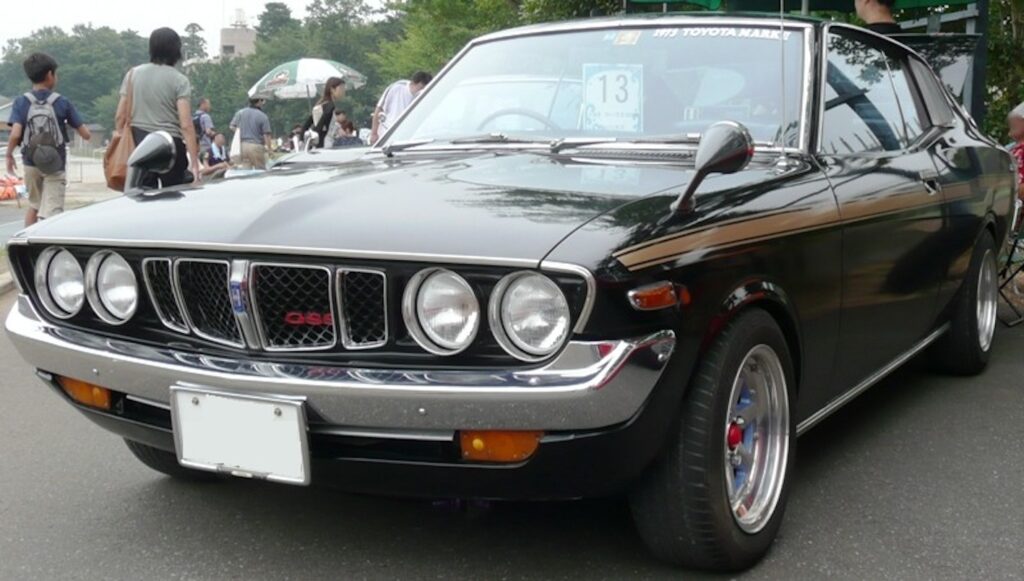
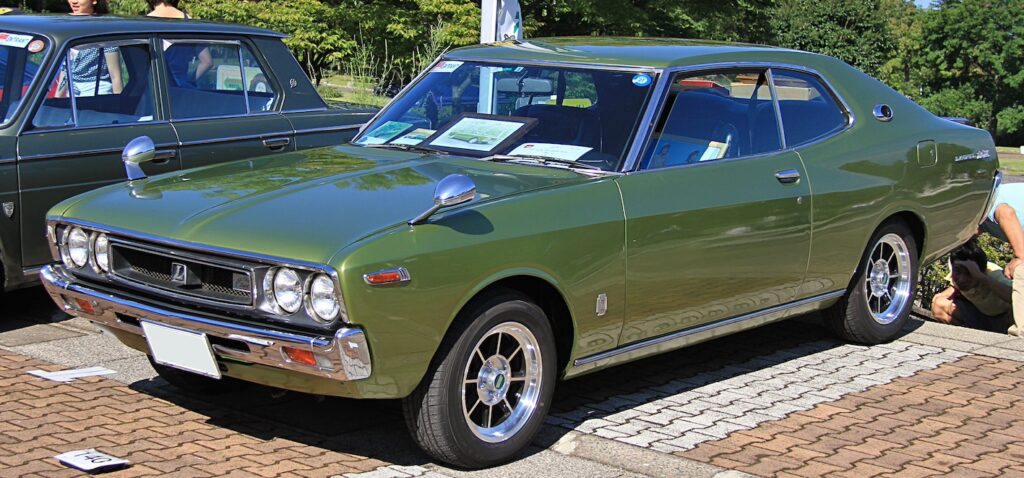
1973年にはトヨタセリカにハッチバックを持ったセリカ・リフトバックが追加され、日産からはあの「ケンとメリー」のスカイラインが発売されます。60年代の小型スポーツカーと違って、これらの車は量販車種だったので、街中でも見かける事が多く、まだ免許証を持たない高校生の私をワクワクさせてくれた事を思い出します。
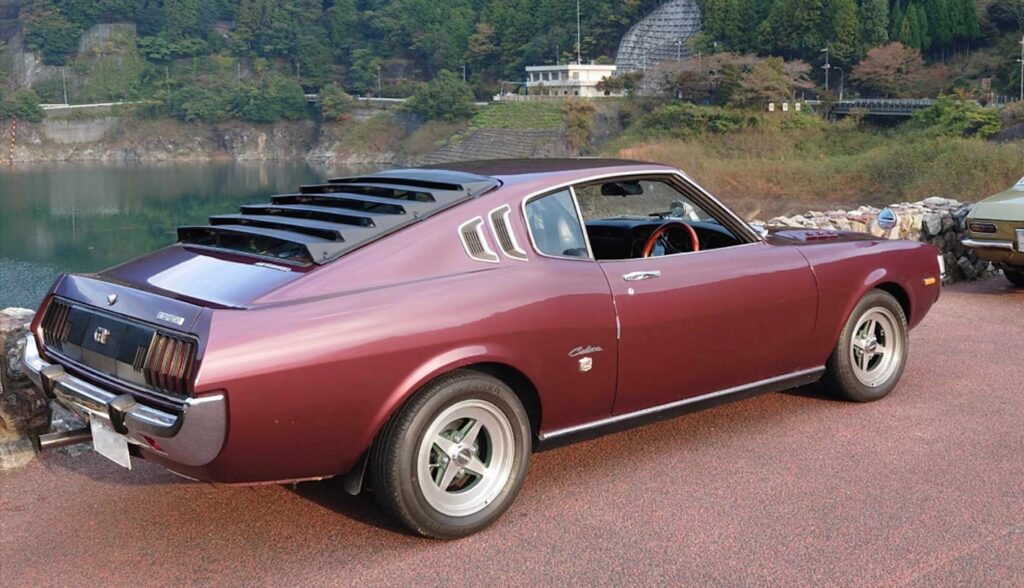
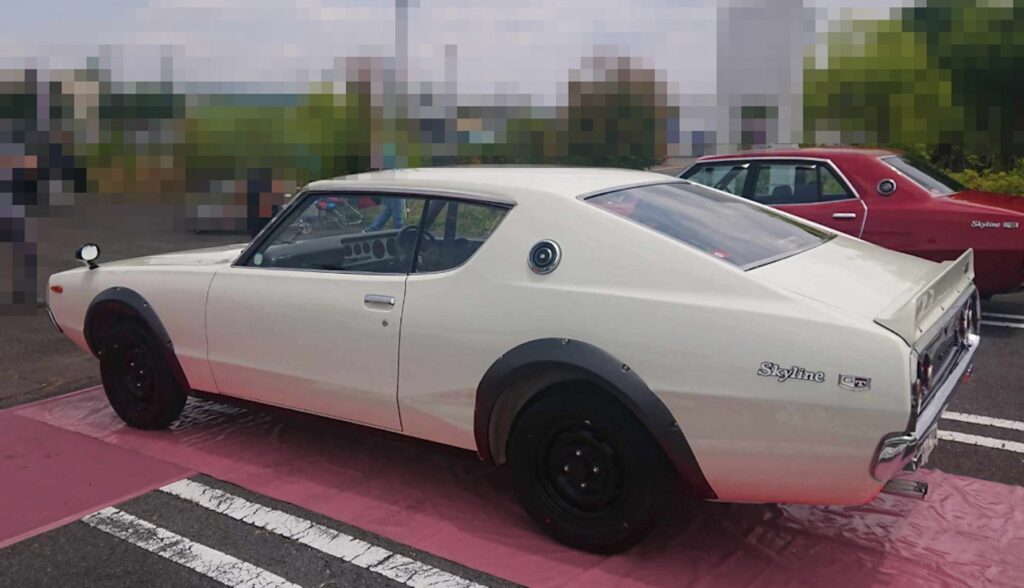
2ドア.ハッチバックの登場
そういったスポーティー路線とは別にホンダからは2ドア.ハッチバックの2車、1972年にシビック、76年にアコードが発売になりました。 アコードサイズのハッチバックは残念ながら乗用車の主流になりえず、次の世代からは4ドア.セダンに代わって行きますが、シビックはジャストサイズだった様でその後セダンも追加しながらも長くコンパクトハッチバックの代名詞になって行きます。後に他のメーカーからも次々にコンパクトハッチが発売されたのがその証です。このシビックの発売はあのVWゴルフの登場より2年も先駆けていたという事実も驚きです。私も社会人になってから3台のコンパクトハッチを乗り継ぎました。
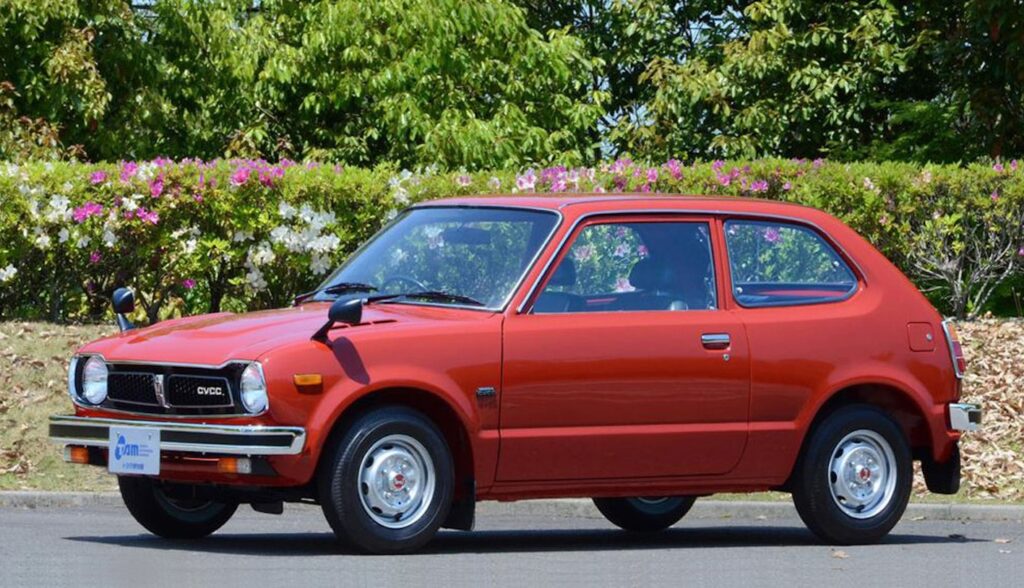
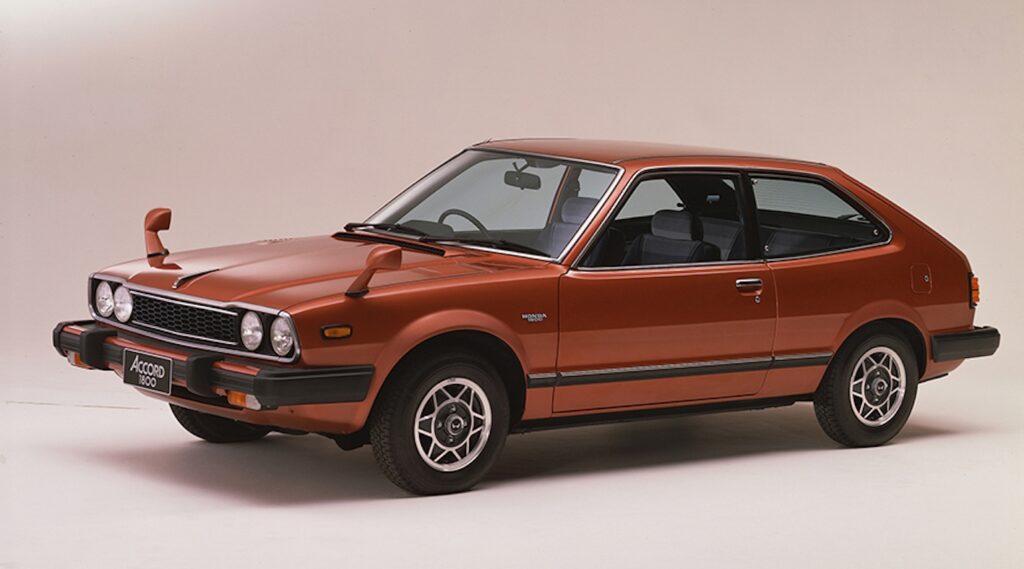
“CarStyling”誌の発刊
私が当時愛読していた自動車雑誌”モーターファン”誌の三栄書房がその臨時増刊号として”Car Styling”誌を発売したのも1972年の9月の事で、この初代シビックやマークII,ローレルのデザイン開発過程がその誌面で紹介されていました。

そして、翌1973年初頭から”CarStyling”誌が定期刊行されました。当時進路を考え始めた高校生だった私にとって、大いに参考になった事は間違いありません。
まだ、この時点では幼少期から好きだった「絵を描く事」と少年期から興味を持ち始めた「車」とは2つの別の物でカーデザイナーになろうと言う考えがあった訳ではありません。 とりあえず絵を描く事を仕事に出来ればと、京都市立芸術大学のデザインコースに入学した私にもう一つの転機をもたらしてくれたのは、その京芸の2年先輩S氏でした。当時自動車メーカー各社は3年生終了時の学生を集めて春休みに春季実習と言う名目でデザイナーの実技試験を実施していました。春休み明け、2年生になった私はそのS先輩からトヨタ自動車の実習の内容等を聞かされ、大いに興味を持つと共に、カーデザイナーと言う職業が自身の中で一気に現実的なものになって行きました。 後日、S先輩はトヨタ自動車に就職し、それを追いかける様に私も2年後にトヨタ自動車に就職する事になりました。
京都市立芸術大学には自動車デザインを教えるコースは無かったので、CarStyling誌上のレンダリングセミナーは大いに参考になりました。当時1本¥500もするスピードライマーカーは大変高価な物でしたが、将来への投資として購入し、誌面のレンダリングを一生懸命模写した事を覚えています。
“CarStyling”誌は間違いなく私のデザイナー人生に無くてはならない物でした。
人の人生に転機をもたらす物やその人生を豊かにしてくれるものは、とても身近に存在しています。
時々、自分の身の周りを振り返りながらあなたの人生を前進して行って下さい。
尚、今回の記事に添付された日本の旧車の写真については、トヨタ博物館様と先回もご協力頂いた日野自動車(株)の松永栄氏のご厚意により提供して頂きました。誌面をお借りして感謝を申し上げます。
The Evolution of Japanese Car Styling and the Road to Car Designer
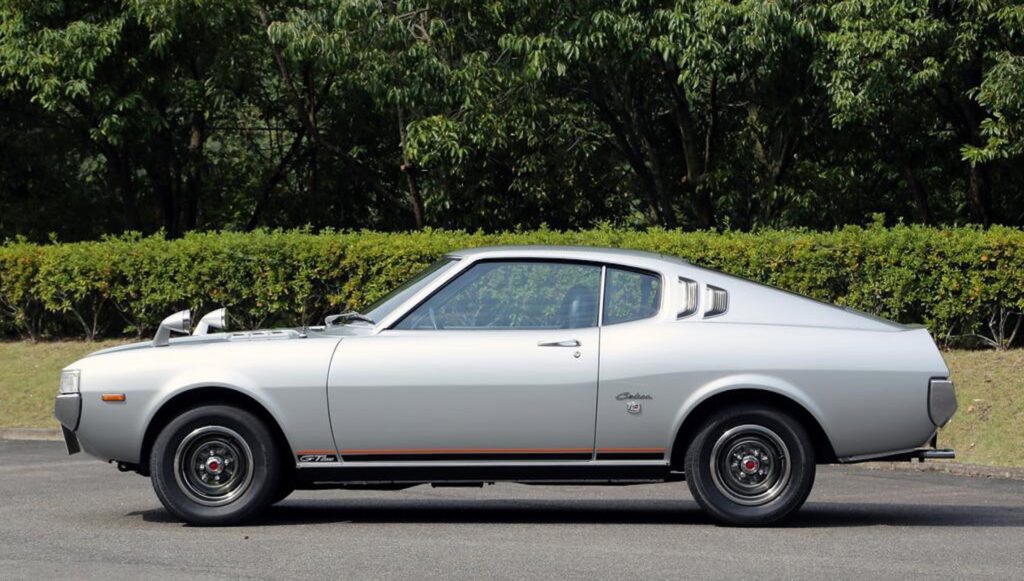
The 60’s and 70’s
As I wrote in my previous column, Japanese automakers in the 1960s produced a gem of a small sports car. This was a time of great technological advances, not only in Japan, but also in other countries. A typical example was the space race between the U.S. and the Soviet Union. In the early 1960s, U.S. President J.F. Kennedy declared, “Within this decade, we will land on the Moon. NASA achieved this goal with Apollo 11 in July 1969, the last year of the 1960s.

From the 1960s to the 1970s, the world as a whole was in an upward spiral, and there was a sense that “tomorrow will always be better than today. A representative event was the rapid spread of three industrial products (ColorTV, Cooler, and Car) into the homes of the general public. This was known as the 3C boom. It was also around this time that Japan’s motorization accelerated dramatically.
Expo ’70 Osaka and Pininfarina Moduro
Then in 1970, there was a monumental event in my hometown of Osaka.It was Expo70: the Osaka World’s Fair.

Among the exhibits at the Expo, of course, the Apollo 11-related exhibits were very popular, as the U.S. landed on the moon the year before and returned, but the most impressive exhibit for me was the white concept car “Pininfarina Moduro” displayed in the Italian Pavilion.

As a third grader in junior high school at the time, we did not yet have our own car, and I took the train everywhere I went, which inevitably made me a “train-loving boy. (Te-chan). Of course, I was also interested in automobiles, which are moving vehicles, but automobiles came second. Moduro made such an impact on my mind that I could say it was a bolt from the blue. Stretchy and stylish American cars and compact and cute Japanese sports cars were attractive as cars, but Moduro had such an impact that it completely overturned the conventional concept of a car. Although it was a two-seater, its overall width of over 2 meters and overall height of 935 mm had proportions and shape that completely overturned the concept of what a car should be. It was so cool as a “thing”
Domestic sporty cars of the 70’s: Celica & Carina, Galant GTO, ‘Hakoska’ H/T*
'HAKOSUKA'= That's what the third generation Nissan Skyline is called. In japanese, the box type is "HAKO GATA", Skyline is"SUKAIRAIN", So HAKO + SUKAIRAIN is called 'HAKOSUKA'
After the summer of 1970 and the Osaka World’s Fair, a new trend was coming, not only in concept cars, but also in mass-produced cars in Japan. In December of that year, Toyota launched the Celica, a two-door coupe, and the Carina, a two-door and four-door sedan. I had already started reading a car magazine, “Motor Fun”, at that time, and I became very interested in car styling when I found out that the Celica’s attractive style was designed on the same platform as the Carina, a relatively ordinary sedan.


In October of the same year, the Galant GTO from Mitsubishi and the Skyline 2-door hardtop (including the GTR) from was also launched by Nissan. These two cars were also based on the chassis of the base mass-market sedan vehicle, and their overall length and height were reduced to create a more sporty style.


Development of modern design unique to Japanese cars
The fourth generation Crown, launched in 1971, was a capsule-like design described as a spindle shape. It adopted a design language that was slightly different from that of the previous design in which the cabin was built on an underbody. The two-door hardtop was particularly modern with a strong expression of its style theme. However, it did not seem to be accepted by the relatively conservative buyers who were Crown’s customers, and in terms of sales, it fell behind its rival, the Nissan Cedric. It is still one of my very favorite designs, but the difficulty of designing a product is that it is not just a matter of being new.

The following year, the third generation Mark II from Toyota and the second generation Laurel from Nissan were released, and coincidentally, both cars skillfully expressed dynamic design themes similar to American cars within the size of Japanese cars.


In 1973, the Toyota Celica with a hatchback, the Celica Liftback, was added to the Toyota Celica lineup, and Nissan released that “Ken and Mary*” Skyline. Unlike the small sports cars of the 60s, these cars were mass-market models, so I remember how often I saw them around town, which excited me as a high school student who did not yet have a driver’s license.
*“Ken and Mary” was the image word used in the advertising at that time.


Appearance of 2-door hatchback
Apart from such sporty lines, Honda launched two two-door hatchbacks, the Civic in 1972 and the Accord in 1976. Unfortunately, the Accord-size hatchback did not become a mainstream passenger car, and was replaced by a 4-door sedan in the next generation. However, the Civic was just the right size, and it became a synonym for compact hatchbacks for a long time, with sedans added to the series.The fact that other manufacturers later launched compact hatches one after another is a testament to this. The fact that the launch of the Civic was preceded by two years by the VW Golf is also surprising. I also drove three compact hatches when I entered the workforce.


Launch of CarStyling magazine
In September 1972, “Car Styling” magazine was released as an extra issue of “Motor Fun,” a car magazine published by Sanei Shobo, which I loved reading at the time,The magazine introduced the design development process of the first generation Civic, Mark II, and Laurel.

Then, in early 1973, “Car Styling” magazine was published on a regular basis. As a high school student at the time, I was beginning to think about my future career path, and I am certain that the magazine was a great source of reference for me.
At this point in time, “drawing,” which I had loved since childhood, and “cars,” which I had been interested in since childhood, were two different things, and I did not have the idea of becoming a car designer.
I enrolled in the design course at Kyoto City University of Arts in the hope of making drawing my career, but it was Mr. S, two years my senior, who brought me another turning point.
At that time, automobile manufacturers were holding practical skill recruitment exams for designers during spring break under the name of “spring training,” gathering students at the end of their third year of college. When I became a sophomore, my senior ‘S’ told me about the practical training at Toyota Motor Corporation, and I became very interested in the job, and at once the profession of car designer became a reality for me. After that, ‘S’ senior went to work for Toyota Motor Corporation, and I followed in his footsteps and went to work for Toyota Motor Corporation two years later.
Kyoto City University of Arts did not have a course to teach automotive design, so the rendering seminar on CarStyling magazine was a great help. At the time, “Speedrymarker” was very expensive, costing 500yen per unit, but I bought it as an investment for the future and remember drawing sketches imitating the rendering in the magazine.
CarStyling magazine has definitely been an integral part of my life as a designer.
The things that bring about a turning point in a person’s life and enrich that life are very close at hand.
From time to time, look around you to see how you can move forward in your life.
In addition,
The photographs of old Japanese cars included in this article were kindly provided by the Toyota Museum and Mr. Sakae Matsunaga of Hino Motors, Ltd.
We would like to take this opportunity to thank them.

![by Car Styling [カースタイリング]](https://motor-fan.jp/wp-content/uploads/2025/04/carstyling-jp_logo.png)
